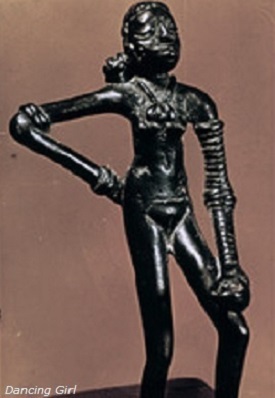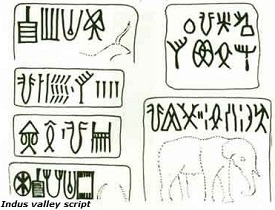
- Ancient Indian History Tutorial
- Ancient Indian History - Home
- Study of Indian History
- Writing of Ancient Indian History
- Imperialist Historiography
- Historiography Nationalist Approach
- Marxist School of History
- Sources of Ancient Indian History
- Archaeological Sources
- Geographical Background
- Geography in Ancient Literature
- Stone Age Cultures
- Mesolithic Culture
- The Neolithic Age
- Chalcolithic Period of India
- Chalcolithic Culture In India
- Harappan Civilization
- Harappan Town Planning
- Harappan Crafts & Industries
- Harappan Culture
- Harappan Religion
- Harappan Chronology
- Vedic Civilization
- Vedic Society
- Vedic Politics
- Vedic Religion & Philosophy
- The Aryan Invasion
- Later Vedic Age
- Social System after Vedic Age
- Achievements of Indian Philosophy
- Evolution of Jainism
- Evolution of Buddhism
- Alexander’s Campaign in India
- Maurya Dynasty
- Kalinga War & its Impact
- Society & Economy during Mauryas
- Mauryan Governance
- Early History of South India
- Age of Smaller Dynasties
- Literature of Satavahana Period
- Society of Satavahana Period
- Economy of Satavahana Period
- Technology of Satavahana Period
- Chola Dynasty
- Pandya Dynasty
- Chera Dynasty
- Period of Foreign Invaders
- Gupta Period
- Decline of Guptas
- Governance of Gupta Period
- Literature of Gupta Period
- Economy in Gupta Period
- Science & Tech of Gupta Period
- India after the Gupta Period
- Period of Harsha
- South India during the Harsha Period
- Kadamba Dynasty
- History of Kamarupa
- India after Harsha
- Gurjara Pratiharas
- Palas of Bengal
- Rashtrakutas of Deccan
- Literature after the Harsha Period
- Society after the Harsha Period
- Economy after the Harsha Period
- Religion after the Harsha Period
- References & Disclaimer
Ancient Indian History - Harappan Culture
Arts
A large variety of objects such as seals, stone statues, terracotta, etc. is superb examples of the art activities.
A Yogi from Mohenjo Daro and two small figurines from Harappa are the most outstanding pieces of art.

A dancing girl statue of about 11.5 cm. in height made up of bronzes was found from Mohenjo Daro.
Daimabad bronze animals’ workmanship, most likely belong to Harappan period.
The red sandstone torso found at Harappa is made up of detachable limbs and head.
The grey stone torso perhaps illustrates a dancing figure. Both these are so realistic that none would believe that they belong to the Harappan period.
Harappan people produced a large number of terracotta figurines, which were handmade. The figurines include humans, animals, birds, and monkey.
Following are the Specimen of Arts from the Harappan Civilization −
Bronze statue (Dancing Girl);
Terracotta Bulls;
Terracotta Female Figurine;
Head of a Yogi; and
Painted Jar dogs, sheep, and cattle.
The most artistic depictions are the figures of humped bull. Figurines of both humped and humpless bulls are found in excavations
A painting was found only on pottery. Unfortunately, no wall paintings, even if there were any, have survived.
Script

The language of Harappan is still unknown. But some scholars connect it to the Dravidian languages and others to Indo-Aryan and Sanskrit.
There are nearly 400 specimens of Harappan signs on seals and other materials such as copper tablets, axes, and pottery. Most of the inscriptions on seals are small, a group of few letters.
The Harappa script has 400 to 500 signs and it is generally agreed that it is not an alphabetic form of writing.
Agriculture
Agriculture was generally practiced along the river banks most of which were flooded during the summer and monsoons. The flood deposited every year fresh alluvial silt, which is highly productive and for which no major furrowing and certainly no manures and irrigation were required.
The cultivated field excavated at Kalibangan shows crisscross furrow marks indicating that two crops were grown simultaneously. This method is followed even today in the Rajasthan, Haryana, and western Uttar Pradesh.
The granaries found at Harappan cities suggest that cereals were produced in such a large quantities. They also kept enough reserve to face any future emergency.
The principal cereals were wheat and barley. Rice was also known and was a favored grain. Remains of rice have been found from Gujarat and Haryana areas.
Six varieties of millets including ragi, kodon, sanwa, and jowar were cultivated, along with peas and beans.
Fragments of cotton cloth found at Mohenjo Daro and other sites show that cotton was also grown.
Cotton has been found at Mehrgarh at least 2,000 years before the mature phase of the Civilization. This is the oldest evidence of cotton in the world.
Other major crops include dates, varieties of legumes, sesame, and mustard.
Wooden plough with a copper or wooden ploughshare was used for tilling fields.
Terracotta models of the plough have been found at Mohenjo Daro and Banawali.
Harvesting of crops would have been done with copper sickles as well as stone blades hafted in wood.
Animals like sheep, goat, humped bull, buffalo, elephant, etc. have been depicted on the seals. This shows that the range of animals domesticated by the Harappan people was quite large.
Skeletal remains of several animals like sheep, goat, bull, buffalo, elephant, camel, pig, dog, and cat etc. have been found in excavations.
Wild animals were hunted for the food. Bones of animals like spotted deer, sambhar deer, hog deer, wild pig, etc. found in the excavation prove it. Besides, several types of birds as well as fishes, were also hunted for food.
Bones of horses have been reported from Lothal, Surkotada, Kalibangan, and several other sites.
Terracotta figurines of the horse have been found at Nausharo and Lothal. But this animal is not depicted on seals.